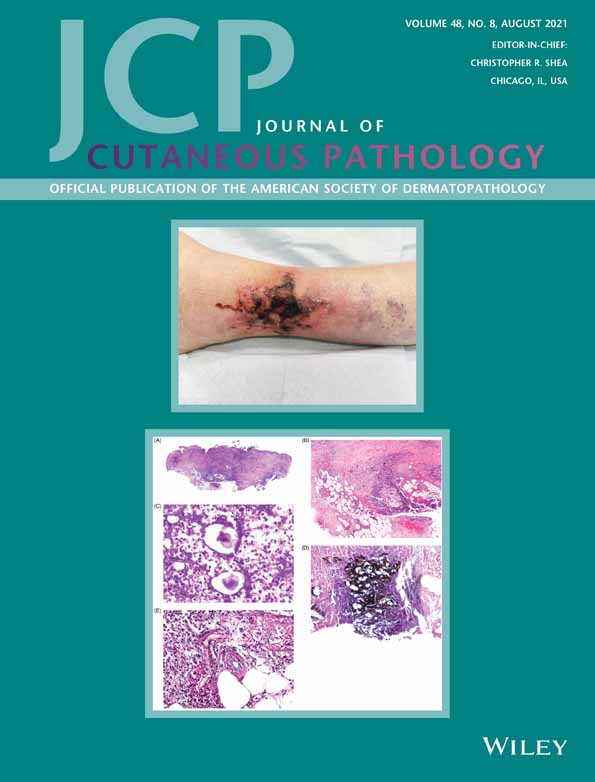An international 3-center training and reading study to assess basal cell carcinoma surgical margins with ex vivo fluorescence confocal microscopy
Funding information: American Society for Laser Medicine and Surgery; A Ward Memorial Research Grant, and Skin Cancer Fo; Byrne Fund at MSKCC; Catalan Government, Grant/Award Number: AGAUR 2014_SGR_603; Center for Scientific Review, Grant/Award Numbers: R01CA199673, R01CA201399, R01EB002715, R01EB012466, R01EB020029; Center for Strategic Scientific Initiatives, National Cancer Institute, Grant/Award Number: P30 CA008748; CIBER de Enfermedades Raras of the Instituto de Salud Carlos III; Fondo de Investigaciones Sanitarias, Grant/Award Numbers: PI15/00716, PI15/00956; Seventh Framework Program: Diagnoptics; Leo Messi Foundation; MARATÓ de TV3 Foundation; Sixth Framework Programme, Grant/Award Number: LSHC-CT-2006-018702 (GenoMEL)
Abstract
Background
Novel solutions are needed for expediting margin assessment to guide basal cell carcinoma (BCC) surgeries. Ex vivo fluorescence confocal microscopy (FCM) is starting to be used in freshly excised surgical specimens to examine BCC margins in real time. Training and educational process are needed for this novel technology to be implemented into clinic.
Objective
To test a training and reading process, and measure diagnostic accuracy of clinicians with varying expertise level in reading ex vivo FCM images.
Methods
An international three-center study was designed for training and reading to assess BCC surgical margins and residual subtypes. Each center included a lead dermatologic/Mohs surgeon (clinical developer of FCM) and three additional readers (dermatologist, dermatopathologist, dermatologic/Mohs surgeon), who use confocal in clinical practice. Testing was conducted on 30 samples.
Results
Overall, the readers achieved 90% average sensitivity, 78% average specificity in detecting residual BCC margins, showing high and consistent diagnostic reading accuracy. Those with expertise in dermatologic surgery and dermatopathology showed the strongest potential for learning to assess FCM images.
Limitations
Small dataset, variability in mosaic quality between centers.
Conclusion
Suggested process is feasible and effective. This process is proposed for wider implementation to facilitate wider adoption of FCM to potentially expedite BCC margin assessment to guide surgery in real time.
CONFLICT OF INTEREST
Dr. Milind Rajadhyaksha is a former employee of and owns equity in Caliber I.D. (formerly, Lucid Inc.), the company that manufactures and sells the VivaScope confocal microscope. The VivaScope is the commercial version of original laboratory prototypes that were developed by Dr. Rajadhyaksha at Massachusetts General Hospital, Harvard Medical School, and at MSKCC. Christi Alessi Fox is an employee and shareholder of Caliber Imaging and Diagnostics, Inc., the manufacturer of the VivaScope System. Anthony Rossi is a consultant at MAVIG. The rest of the authors do not have any conflict of interest.
Open Research
DATA AVAILABILITY STATEMENT
The data that support the findings of this study are available from the corresponding author upon reasonable request.




